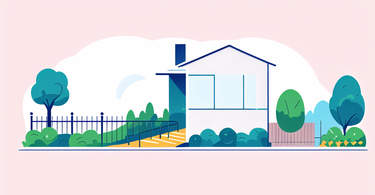Understanding the Benefits of Aluminum Fencing
The Durability and Longevity of Aluminum
Aluminum fencing is known for its exceptional durability and longevity. It's resistant to rust, corrosion, and weathering. This makes it ideal for various climates. Aluminum doesn't crack, warp, or rot like wood. It can withstand harsh conditions without losing its strength or appearance. With proper care, aluminum fences can last for decades. They maintain their look and function over time. This material is also lightweight, making it easy to handle during installation and repairs.

Aluminum Fencing: Cost-Effectiveness and ROI
When it comes to cost-effectiveness, aluminum fencing offers great value. The initial cost may be higher than some materials. But its long lifespan makes it a smart investment. Aluminum requires minimal maintenance, reducing long-term expenses. It doesn't need painting or staining like wood fences. This saves time and money on upkeep. The durability of aluminum means fewer repairs and replacements. This leads to significant savings over time. Aluminum fencing can also increase property value, offering a good return on investment.
Installation: Ease and Speed of Setup
Installing aluminum fencing is typically quick and straightforward. The lightweight nature of aluminum makes it easy to handle. This speeds up the installation process. Many aluminum fence systems come with pre-assembled panels. These can be easily connected on-site. The simplicity of installation often means lower labor costs. DIY enthusiasts can often install aluminum fencing themselves. This can lead to additional cost savings. The ease of installation also means less disruption to your property during the process.
Evaluating the Advantages of Concrete Fencing
Aesthetics and Versatility in Design
Concrete fencing offers a wide range of aesthetic options. It can be molded into various shapes and textures. This versatility allows it to complement different architectural styles. Concrete can be colored or stained to match your property's look. It can mimic the appearance of other materials like stone or wood. Precast concrete panels come in many designs, from sleek modern to classic styles. Custom designs can be created to suit specific preferences. The ability to customize makes concrete fencing a popular choice for unique properties.

Safety and Security: The Strength of Concrete
Concrete fencing is renowned for its strength and security. It provides a solid barrier that's difficult to breach. This makes it an excellent choice for properties needing high security. Concrete walls can withstand severe weather conditions, including high winds. They offer good sound insulation, reducing noise from busy roads or neighbors. In areas prone to wildfires, concrete fencing can act as a firebreak. Its robust nature also makes it resistant to pests and animals. For properties near busy roads, concrete fencing can enhance safety by preventing vehicle intrusion.
Maintenance: Why Concrete Panels Require Less Attention
One of the major advantages of concrete fencing is its low maintenance requirements. Once installed, concrete panels need minimal upkeep. They don't rot, warp, or attract pests like wood fences. Concrete is resistant to weather damage and doesn't rust like metal. It doesn't need regular painting or staining to maintain its appearance. Occasional cleaning with water is usually sufficient to keep it looking good. Any graffiti can be easily removed from concrete surfaces. The durability of concrete means it rarely needs repairs. This low-maintenance nature saves time and money in the long run.
Comparative Analysis: Choosing Between Aluminum and Concrete
Assessing the Environmental Impact of Materials
When considering eco-friendly fencing options, both aluminum and concrete have their merits. Aluminum is highly recyclable, making it a sustainable choice. It can be recycled repeatedly without losing quality. This reduces the demand for new raw materials. Concrete, while not recyclable, is made from abundant natural materials. It has a long lifespan, reducing the need for frequent replacements. Concrete production does have a higher carbon footprint initially. However, its durability means less environmental impact over time. Aluminum production is energy-intensive but uses less energy than concrete in the long run. Both materials can be considered eco-friendly fencing options in their own ways.

Long-Term Performance and Warranty Considerations
Both aluminum and concrete fencing offer excellent long-term performance. Aluminum fences often come with lengthy warranties, sometimes up to lifetime guarantees. These warranties usually cover defects in materials and workmanship. Concrete fencing typically has shorter warranty periods but still offers long-lasting durability. Aluminum maintains its appearance over time with minimal fading or wear. Concrete may show signs of aging but often this adds to its character. Both materials resist damage from weather and environmental factors. Aluminum is more likely to dent or bend under severe impact. Concrete, while more resistant to impact, can crack under extreme conditions. Consider your specific needs when weighing these long-term performance factors.
Price and Upfront Costs vs. Potential Savings
The initial cost of aluminum fencing is generally lower than that of concrete. Aluminum is easier to transport and install, reducing labor costs. However, concrete fencing often proves more cost-effective in the long run. It requires less maintenance and has a longer lifespan. Aluminum may need occasional repairs or replacements of damaged sections. Concrete rarely needs such attention, saving money over time. The energy efficiency of concrete can lead to savings on heating and cooling costs. Aluminum, being lightweight, doesn't offer the same insulation benefits. Both materials can increase property value, but concrete might have a slight edge in some markets. Consider both upfront costs and long-term savings when making your decision.
